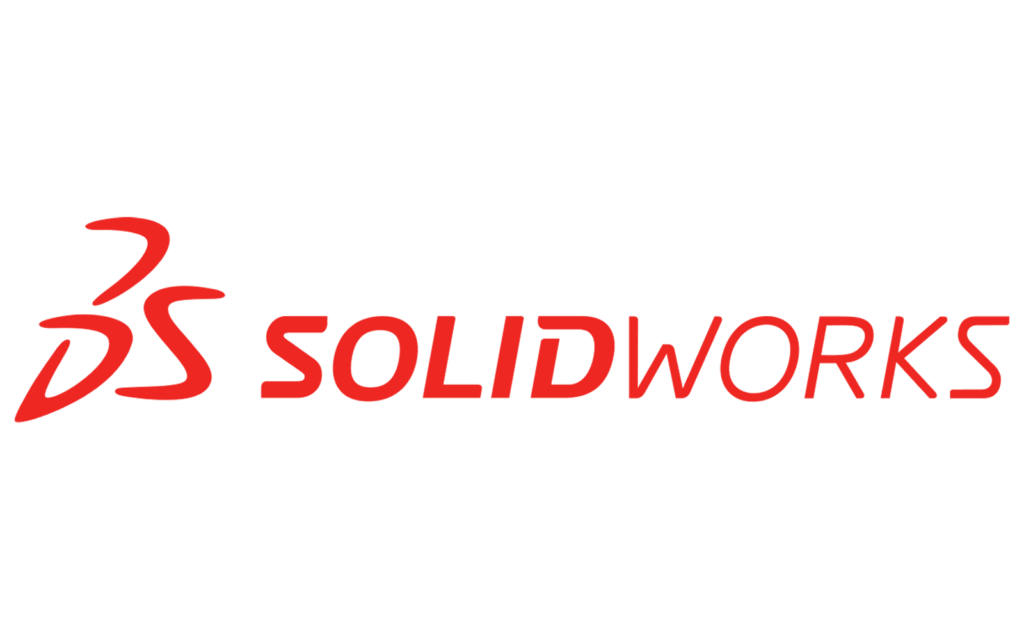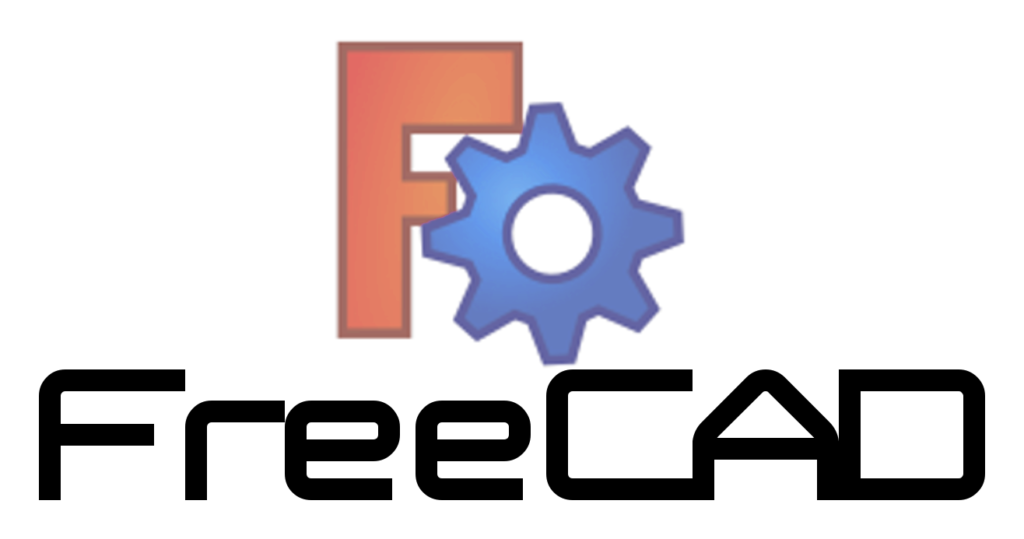In the dynamic realm of 3D modeling and design, SolidWorks has long reigned as a powerhouse, celebrated for its extensive features and capabilities. Yet, as technological landscapes evolve and new players emerge, the quest to find viable SolidWorks alternatives becomes increasingly relevant. In this all-encompassing guide, we embark on a journey through the landscape of SolidWorks alternatives, presenting you with a detailed panorama of the most notable options available. So, brace yourself for an exhilarating expedition as we uncover the perfect SolidWorks alternative to suit your unique needs.
Understanding the Power of SolidWorks

Before we venture into the realm of SolidWorks alternatives, let’s take a moment to marvel at the strengths SolidWorks brings to the table. This formidable CAD software has captured the hearts of designers and engineers for a multitude of reasons:
Feature-Rich Design Capabilities
SolidWorks stands tall for its extensive repertoire of features, ranging from parametric modeling to intricate assembly design and robust simulation tools. It serves as a versatile canvas for professionals to breathe life into their ideas, whether they’re crafting finely detailed machine components or envisioning complex architectural structures.
Seamless Integration
One of SolidWorks’ distinct advantages lies in its ability to integrate with other design and engineering software effortlessly. This interplay with companion tools makes it a prime choice for professionals who rely on the synergy of multiple applications to streamline their workflows. Whether it’s CAM software for manufacturing or simulation tools for intricate analysis, SolidWorks ensures compatibility and cooperation.
User-Friendly Interface
SolidWorks boasts an intuitive user interface, rendering it accessible to a broad spectrum of users, from seasoned designers to newcomers in the world of CAD. This user-centric design puts efficiency and productivity at the forefront of the user experience, ensuring that you can immerse yourself in your projects without losing your way amidst a labyrinth of menus and options.
Why the Need for SolidWorks Alternatives?

While SolidWorks stands tall in the CAD arena, there arise compelling reasons to seek out SolidWorks alternatives. These factors, while succinctly listed earlier, warrant a more elaborate exploration:
1. Cost Concerns
The cost of SolidWorks can be substantial, particularly for smaller businesses or independent designers operating within budget constraints. Licensing fees and maintenance costs can add up swiftly, prompting the exploration of more cost-effective SolidWorks alternatives. The financial aspect often becomes a pivotal consideration, leading professionals to weigh their options and seek SolidWorks alternatives that offer a comparable feature set without the hefty price tag.
2. Platform Independence
In an era where design professionals frequently navigate between different operating systems and environments, software platform independence takes center stage. The flexibility to work seamlessly across various platforms becomes paramount, ensuring that designers can pivot effortlessly to meet the diverse demands of their projects. SolidWorks alternative CAD solutions offer this freedom, granting users the ability to work on their preferred platform without constraints.
3. Unique Requirements
The breadth of industries and niches encompassed by the world of design presents a varied landscape of requirements. Some professionals find that SolidWorks, while excellent for many tasks, falls short in addressing highly specialized needs. For example, architectural designers may yearn for tools specifically tailored to building design, incorporating architectural elements seamlessly. Conversely, industrial engineers may seek software customized for the intricacies of manufacturing processes, with precision tools designed to optimize efficiency and accuracy. In essence, the quest for SolidWorks alternatives often hinges on the quest for specialized features that align perfectly with one’s niche.
Exploring Commonly Used SolidWorks Alternatives

1. AutoCAD
AutoCAD, an Autodesk masterpiece, stands as a versatile and widely embraced CAD software offering both 2D and 3D design capabilities. Its hallmark lies in its flexibility, catering seamlessly to diverse industries with its rich toolset. With AutoCAD, you have the power to craft precise technical drawings, architecturally sound plans, and intricate 3D models, all within a singular software ecosystem.
AutoCAD’s versatility extends to its adaptability to various design disciplines. Whether you’re an architect working on intricate building blueprints, a civil engineer designing infrastructure projects, or a mechanical designer crafting precision components, AutoCAD’s extensive feature set has you covered. Its 3D modeling capabilities allow you to visualize designs from every angle, ensuring accuracy and precision in your projects.
Additionally, AutoCAD’s robust documentation tools make it a top choice for professionals who require precise documentation and reporting. You can generate detailed drawings, schematics, and reports with ease, streamlining the communication of design intent to stakeholders.
2. Fusion 360
Also hailing from Autodesk, Fusion 360 emerges as a cloud-based CAD/CAM platform that artfully combines design, engineering, and simulation tools. Its cloud-based nature redefines collaboration, allowing teams to synchronize efforts from virtually anywhere on the globe.
Fusion 360 empowers users with a comprehensive suite of tools that seamlessly integrate into the design process. From concept to manufacturing, Fusion 360 provides a unified platform for designing, simulating, and machining. This integration significantly reduces the time and effort required to transition from design to production.
Moreover, Fusion 360’s cloud-based architecture ensures that your data is accessible anytime, anywhere, fostering real-time collaboration among team members. Design changes and updates are instantly synchronized, eliminating version control headaches and ensuring that everyone is working with the latest design iteration.
3. CATIA
Dassault Systèmes’ CATIA occupies a prominent position in the CAD domain, especially within the aerospace and automotive sectors. Its forte lies in managing complex product designs and simulations, making it a preferred choice for crafting intricate aircraft components and pioneering automobile designs.
CATIA’s strength lies in its ability to handle large and intricate assemblies with ease. Designers in industries that demand precision and accuracy turn to CATIA for its advanced parametric modeling capabilities and robust simulation tools. Whether you’re designing complex mechanical systems, intricate surfacing for automotive exteriors, or aerodynamic structures, CATIA offers a comprehensive suite of tools tailored to your needs.
Additionally, CATIA’s collaborative design environment fosters teamwork, allowing multiple engineers and designers to work concurrently on a project. Its powerful simulation and analysis capabilities enable engineers to validate designs, ensuring they meet stringent industry standards and requirements.
4. Creo Parametric
Formerly known as Pro/ENGINEER, Creo Parametric introduces parametric 3D modeling and simulation tools, setting the stage for precision and engineering excellence. It empowers you to create intricate models while offering comprehensive analysis capabilities to ensure your designs meet exacting standards.
Creo Parametric’s parametric modeling capabilities are at the forefront of its appeal. These capabilities allow you to define and control design parameters, enabling quick and accurate design changes. Whether you’re modifying a single component or a complex assembly, Creo Parametric ensures that design revisions are efficient and error-free.
Moreover, Creo Parametric offers a wide range of specialized modules for industries such as mechanical engineering, product design, and even sheet metal fabrication. This versatility makes it suitable for a diverse range of applications, from designing consumer products to industrial machinery.
5. Rhino
Rhino, affectionately referred to as Rhinoceros, emerges as a darling of designers and artists for sculpting intricate organic shapes. Its renowned flexibility opens the floodgates of creative and artistic potential, whether you’re sculpting virtual masterpieces or fashioning avant-garde architectural concepts.
Rhino’s strength lies in its versatility as a surface modeler. Unlike traditional solid modeling software, Rhino excels in creating complex and freeform shapes. It’s a go-to choice for designers in industries such as jewelry, architecture, and industrial design who require intricate and curvaceous designs.
Furthermore, Rhino seamlessly integrates with various rendering and visualization plugins, allowing you to transform your 3D models into stunningly realistic visuals. This makes it an excellent choice for designers looking to create compelling presentations and renderings of their designs.
6. Solid Edge
Siemens’ Solid Edge presents the innovative concept of synchronous technology, deftly blending parametric and direct modeling. This hybrid approach provides unparalleled versatility in CAD software. With Solid Edge, you can effortlessly switch between precision-driven design modifications and quick, intuitive edits, ensuring optimal productivity.
Solid Edge’s synchronous technology eliminates the constraints typically associated with traditional parametric modeling. You can make changes to imported 3D models or modify parametric features without the need to regenerate the entire design. This flexibility is a game-changer for design teams working with a variety of data sources or dealing with evolving design requirements.
Moreover, Solid Edge offers robust simulation and validation tools, allowing engineers to ensure product performance and structural integrity. With integrated data management and collaboration features, Solid Edge streamlines the entire design process, from concept to manufacturing.
7. Tinkercad
Tinkercad, another gem from Autodesk’s treasure trove, beckons as a beginner-friendly 3D modeling tool, tailor-made for educational purposes and straightforward design projects. Its uncomplicated interface and user-friendly tools make it an ideal starting point for aspiring designers and engineers, facilitating a gentle introduction to 3D modeling.
Tinkercad’s simplicity and accessibility make it a valuable resource for educators and students alike. Its intuitive drag-and-drop interface allows even those with no prior CAD experience to create 3D models effortlessly. This makes it an excellent tool for introducing students to the world of design and engineering.
Furthermore, Tinkercad’s cloud-based platform ensures that designs are accessible from any device with an internet connection. This flexibility encourages collaboration among students or team members, making it an excellent choice for educational institutions and small design teams.
8. FreeCAD
FreeCAD, an open-source champion, strides into the spotlight as the budget-conscious designer’s ally. It bestows parametric 3D modeling capabilities without the financial burden often associated with proprietary software. Whether you’re a hobbyist or a small business seeking to economize, FreeCAD offers a competent SolidWorks alternative for crafting intricate 3D models without straining your wallet.
FreeCAD’s open-source nature means that it’s continually evolving, with a community of developers and users contributing to its development. This ensures that the software remains up-to-date and responsive to the needs of its user base.
Moreover, FreeCAD’s parametric modeling capabilities make it a versatile tool for a wide range of design projects. It’s particularly well-suited for mechanical design, architectural modeling, and product design. With a growing library of plugins and extensions, FreeCAD’s functionality can be extended to suit specific design requirements.
9. Onshape
Onshape, a cloud-centric CAD platform, unfurls its banner as the harbinger of real-time collaboration, version control, and parametric modeling. Tailored for teams that value seamless cooperation, Onshape ensures that every team member enjoys access to the latest project version, rendering collaboration fluid and efficient.
Onshape’s cloud-based architecture eliminates many of the challenges associated with traditional CAD software. Design teams can collaborate in real time, regardless of their physical locations. This not only accelerates the design process but also simplifies version control, ensuring that everyone is working with the most up-to-date design data.
Additionally, Onshape’s parametric modeling capabilities provide the precision and flexibility needed for complex design projects. Changes can be made at any stage of the design process, and these modifications are automatically updated across all project files, ensuring consistency and accuracy.
10. Blender
Blender, celebrated primarily for its prowess in 3D modeling and animation, conceals within its arsenal robust modeling capabilities. Its cost-effectiveness elevates it to the forefront of consideration for specific design tasks, fostering a creative haven for artists and designers alike.
Blender’s versatility extends beyond animation and rendering; it offers a comprehensive set of modeling tools suitable for a wide range of design projects. Whether you’re sculpting organic forms, designing architectural spaces, or creating intricate product prototypes, Blender’s modeling capabilities provide the necessary flexibility.
Furthermore, Blender’s active and passionate community continually develops and shares add-ons and plugins, expanding its functionality. This means that designers can tailor Blender to their specific needs, enhancing their design workflows without incurring additional costs.
11. SOLIDThinking
Now a part of the Altair constellation, SOLIDThinking emerges as a robust player in the industrial design and engineering software realm. Its suite of tools is engineered to optimize your product’s design and performance, making it an invaluable asset for engineers and designers on the hunt for innovation and efficiency.
SOLIDThinking’s strength lies in its emphasis on generative design, a revolutionary approach that leverages algorithms to explore countless design variations. This leads to more efficient and lightweight structures, a critical consideration in industries such as aerospace and automotive.
Moreover, SOLIDThinking offers a range of simulation and analysis tools that enable engineers to validate and optimize their designs. Whether it’s simulating structural integrity, fluid dynamics, or thermal behavior, SOLIDThinking provides the necessary tools for comprehensive analysis.
12. AutoCAD Mechanical
AutoCAD Mechanical, a specialized branch of AutoCAD, unfurls its capabilities with tailored precision, meticulously curated for mechanical engineering and manufacturing design. If your design focus revolves around mechanical components and precision engineering, AutoCAD Mechanical extends a dedicated environment equipped with an arsenal of industry-specific tools.
AutoCAD Mechanical caters specifically to the needs of mechanical engineers and product designers. It provides an extensive library of standardized parts and components, reducing the time and effort required to create detailed mechanical drawings.
Furthermore, AutoCAD Mechanical includes specialized tools for generating mechanical symbols, adding dimensions and tolerances, and performing interference checks. These features are essential for ensuring that mechanical designs meet the rigorous standards of the industry.
13. BricsCAD
BricsCAD earns accolades for its seamless compatibility with AutoCAD files. This CAD stalwart augments its appeal with a plethora of industry-specific modules meticulously designed to cater to precise design needs. For those transitioning from AutoCAD, BricsCAD ensures a smooth migration path, fostering a familiar yet enriched design environment.
BricsCAD’s compatibility with AutoCAD means that users can seamlessly work with DWG files, eliminating the need for file format conversions. This compatibility extends to custom AutoCAD applications, ensuring that existing tools and workflows can be seamlessly integrated into BricsCAD.
Additionally, BricsCAD offers a range of specialized solutions tailored to industries such as civil engineering, GIS, and BIM (Building Information Modeling). These industry-specific modules provide the necessary tools and features for professionals working in specialized design disciplines.
14. IronCAD
IronCAD commands attention with its innovative design methodologies, ushering in the era of drag-and-drop 3D modeling. This unique approach accelerates design iterations and streamlines the creative process, making it a distinctive SolidWorks alternative in the CAD landscape.
IronCAD’s drag-and-drop 3D modeling approach simplifies the design process by allowing users to manipulate and assemble 3D components intuitively. This approach is particularly appealing to those who prefer a more visual and hands-on approach to design.
Furthermore, IronCAD’s dual modeling environment offers both parametric and direct modeling capabilities. This duality provides users with the flexibility to choose the most suitable modeling method for their specific design tasks. Whether you’re creating intricate assemblies or conceptualizing innovative product designs, IronCAD adapts to your needs.
15. PTC Creo Elements/Direct Modeling
Hailing from the PTC lineage, Creo Elements/Direct Modeling focuses its energies on direct modeling techniques for 3D design. This results in unmatched flexibility and ease of use. Creo Elements/Direct Modeling simplifies the design process, allowing for swift modifications and adjustments.
Creo Elements/Direct Modeling’s strength lies in its straightforward and intuitive approach to 3D modeling. Users can directly manipulate geometry, making quick design changes a breeze. This direct modeling approach is ideal for design scenarios where flexibility and agility are paramount.
Additionally, Creo Elements/Direct Modeling includes a wide range of specialized modules for industries such as manufacturing, sheet metal design, and electrical design. These modules provide the necessary tools for professionals to address specific design challenges effectively.
Factors to Ponder When Choosing the Perfect SolidWorks Alternative

While on the quest for the ideal SolidWorks alternative, it’s imperative to consider several crucial factors:
1. Cost and Budget
Evaluate how the SolidWorks alternative aligns with your budget constraints. Remember to factor in additional costs, such as training and potential add-ons, that might be necessary to achieve the desired functionality. Cost considerations often hold significant weight in the decision-making process, as organizations and individuals seek to optimize value without sacrificing quality. Finding a SolidWorks alternative that offers a competitive feature set while being budget-friendly can be a pivotal factor in your choice.
2. Industry Specificity
Determine whether the software caters to the unique requirements of your industry. Some SolidWorks alternatives are finely tuned to specific niches, offering specialized tools and features meticulously designed to meet the demands of particular fields. Industry-specificity ensures that the software aligns seamlessly with your workflow, enhancing productivity and precision. Choosing a SolidWorks alternative that understands and addresses the specific needs of your industry can be a game-changer in terms of efficiency and effectiveness.
3. Learning Curve
Assess the ease with which you and your team can adapt to the new software. A steep learning curve can have a profound impact on productivity and project timelines, so choose wisely. User-friendliness and accessibility become critical criteria, as a shorter learning curve allows for a quicker transition and increased efficiency. Opting for a SolidWorks alternative that offers a smoother onboarding process can expedite the integration of the new software into your workflow, minimizing disruptions.
4. Collaboration Tools
If collaboration is integral to your workflow, opt for software that offers robust collaboration features. Look for features such as version control, real-time collaboration, and seamless integration with other tools used by your team. Collaboration tools play a pivotal role in today’s interconnected world, enabling teams to work harmoniously across geographical boundaries. Prioritizing a SolidWorks alternative that enhances collaboration can lead to more streamlined project workflows and improved communication among team members.
5. Platform Compatibility
Ensure that the software is compatible with your operating system and hardware. Compatibility issues can quickly become bottlenecks in your design process, so it’s wise to address this concern preemptively. Platform compatibility ensures that you can harness the full potential of the software on your preferred system, eliminating potential hurdles. Choosing a SolidWorks alternative that seamlessly integrates with your existing hardware and software environment can prevent technical roadblocks and ensure a smooth transition.
In Conclusion
The world of CAD software, with its ever-evolving landscape, beckons the search for the perfect SolidWorks alternative. The array of SolidWorks alternatives we’ve explored here offers a diverse spectrum of features and capabilities, catering to a wide range of needs and preferences. Ultimately, the choice that best suits you hinges on your unique requirements, budget, and the specific demands of your industry. As you navigate this intricate terrain, take your time to explore these SolidWorks alternatives thoroughly. In doing so, you’ll pave the way for your next groundbreaking design project, guided by a powerful and tailored CAD solution.









